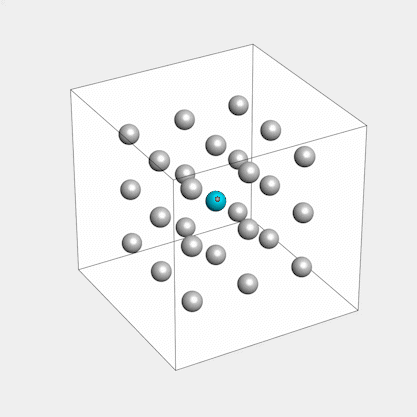
Stirring milk into your coffee is a simple part of many morning routines. But the liquids swirling together in your cup are a microcosm of the same complex process–turbulent mixing–that drives many environmental and industrial processes, from ocean waves to combustion engines in cars and aircrafts.
In a study in Physical Review Letters, researchers at the Whiting School of Engineering tackle a fundamental problem: how fluid elements are folded in turbulent flows to enhance mixing.
“Turbulent mixing is connected to many real-world challenges, such as the dispersion of pollutants in air and water, change of climate sensitivity, and heat exchange in the deep ocean. For industrial applications, it’s also an important process in chemical reactors and water treatment,” said Rui Ni, an associate professor in the Department of Mechanical Engineering and senior author of the study.
Fluid layers mix when turbulence occurs, creating swirls and eddies of various sizes that can fold and stretch the fluid elements. Back to the example above: As you stir your coffee, you induce a turbulent flow and the milk droplets are stretched and folded repetitively, leading to a well-mixed cup of joe.
Despite how often we encounter turbulence in daily lives, it’s still hard for scientists to understand exactly what happens when fluids mix together, says Ni.
To find out more about this process, Ni’s team analyzed the effect of curvature, or the amount of folding of fluid elements, on turbulent mixing using numerical simulation.

The team’s simulation shows significant stretching and folding of fluid elements in a turbulent flow.
The researchers simulated and studied how the curvature evolved over time using the Johns Hopkins Turbulence Databases. They found that the folding of fluid elements has two distinct stages. In the early stage, the turbulent velocity field directly bends a fluid element and the curvature grows linearly. But in the later stage of mixing, the already strongly bent fluid elements are then stretched, and the curvature begins to grow exponentially.
The bigger the curvature is, the better the flow is mixed. “Based on our work, we propose the formation of such big curvature is due to the stretching of already bent fluid elements,” said Yinghe Qi, lead author and a graduate student in Ni’s lab.
Qi also says that when it comes to mixing the perfect cup of coffee or Martini, we should always stir faster to generate turbulence. Once turbulence appears, fluid elements will fold very efficiently, which leads to better mixing.
The researchers believe that the important folding characteristics they have identified will also lead to more reliable turbulence models for practical applications. For example, engineers use turbulence models to help them design safer and more efficient aircraft, and to reduce fuel consumption and emission in engines. Improved models can even improve the performance of some medical devices, such as artificial heart valves.
“We hope our discoveries will one day lead to better understanding and modeling of turbulent processes that are happening all around us,” said Qi. “These findings are also important in understanding other scientific problems in turbulence, such as energy cascade, which is a classic diagram for turbulence, vortex dynamics, and the deformation of droplets.”
Co-authors include Charles Meneveau, Louis M. Sardella Professor in Mechanical Engineering at Johns Hopkins, and Greg A. Voth, a professor of physics at Wesleyan University.